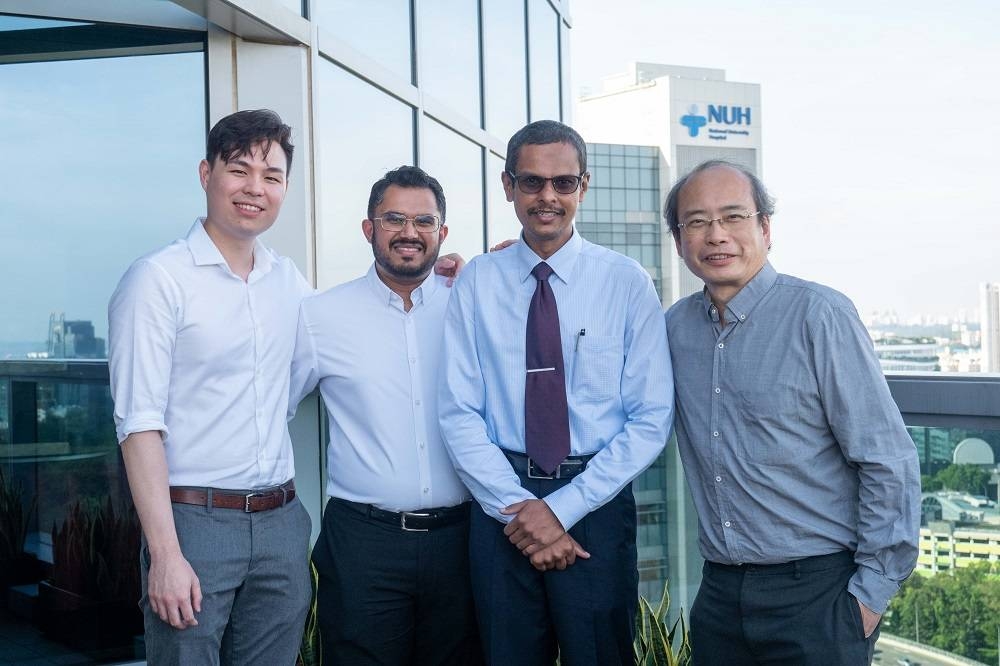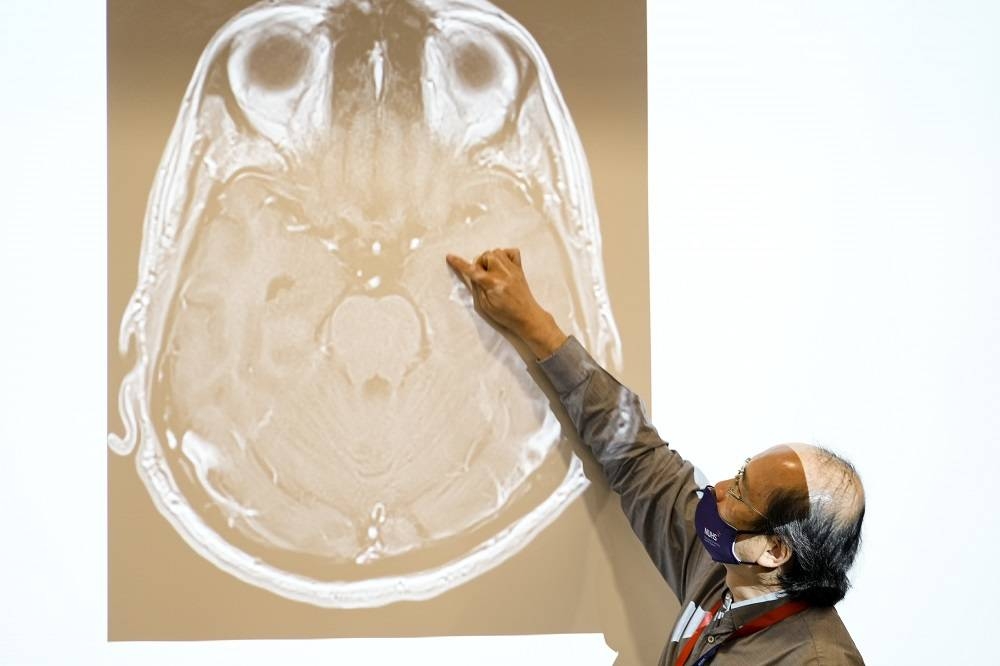SINGAPORE, May 21 — When Maideen Sadayan turned violent towards his wife of 15 years and their four children, escalating to the point of police intervention and divorce in 2020, he thought his personality had changed due to ageing and the Covid-19 lockdowns at the time.
However, doctors at National University Hospital (NUH) — including a former colleague who could not believe his family relations would break down this way — later found that his behaviour likely changed for the worse because of a brain tumour.
The discovery saved his marriage. Sadayan, 48, reconciled with his estranged family and remarried his wife late last month while he continues to undergo treatment for the cancer.
Recounting his experience to reporters at NUH, the product manager at a medical company spoke of how his behaviour began to change about two to three years ago, which he thought was normal due to ageing and the stifling environment around him.
At the time, the Covid-19 pandemic was still in its early days and the initial lockdowns disrupted his active lifestyle of cycling and trekking.
“I experienced some mood swings, which sort of gradually increased, and that affected both me and the family,” he recounted.
Things got so bad, he turned violent and abusive towards his wife of 15 years and their four children, so much so the police had to be called in, and he and his wife divorced in June 2020. “Maybe it was the Covid isolation that made me angry, that made people upset, maybe it was working from home, maybe it was not eating out. Really, I didn’t understand,” Sadayan said.
He did not reveal his children’s ages when asked and declined to give details of his violent episodes with his family.
Experiencing ‘white-out’
He only discovered the true nature of his condition in the year after his divorce, when he began experiencing “white-outs”, also known as epileptic seizures. His first was in June last year, which happened while Sadayan was feeding his cat.
“I ‘whited-out’ for 20 seconds and I don’t remember anything in that time.
“I didn’t fall and I recovered 20 seconds later. I could see normally, but I had a metallic taste in my mouth,” Sadayan said.
Speaking to reporters, Clinical Associate Professor Yeo Tseng Tsai from NUH said that people who experience white-outs will undergo spells of blank stares.
“Suddenly you’re talking and then you’re not with it — total silence or you stare with your eyes open with no movement or anything for... 20 to 30 seconds and then suddenly everything comes back.”
Assoc Prof Yeo, a senior consultant who heads the division of neurosurgery at the hospital, also led the medical team looking into Sadayan’s case.
Other doctors in the team were Dr Rambert Wee and Dr Nivedh Dinesh.
It was clear that Sadayan had a seizure, Assoc Prof Yeo added.

Sadayan said that he had several more white-outs in the following days after his first, but carried on with his daily life, going hiking with his friends and driving. Eventually, he was persuaded by colleagues at the German medical company where he worked to seek medical attention at NUH’s emergency department.
When he did, scans revealed a tumour, 2cm to 2.5cm in diameter, that was located in the amygdala.
The amygdala is the emotional part of the brain responsible for rage and anger, and governs survival reactions such as the “fight or flight” response, Assoc Prof Yeo said.
The location of his brain tumour likely affected the emotional part of his brain, triggering the aggressive behavioural changes that led to his divorce, he added.
Assoc Prof Yeo, who had known Sadayan for some time before learning of his condition, said that he was surprised to learn of Sadayan’s divorce and the reasons behind it because he “just wasn’t that kind of person”.
The two men got to know each other because Sadayan used to work as a radiographer at NUH in the early 2000s.
“A lot of his anger was probably a result of the tumour sort of impeding the function of this part (amygdala) of the brain,” Assoc Prof Yeo added.

Initially thought to be benign, the tumour was later diagnosed to be glioblastoma after it was removed and examined.
A malignant form of brain tumour, glioblastoma is one of the most aggressive types of brain cancer, Assoc Prof Yeo said.
The condition is incurable and the median survival for most patients today vary from 18 to 24 months, and can cause worsening headaches, nausea, vomiting and seizures.
Brain cancer is rare, though glioblastoma is the most common type of brain cancer, affecting about five out of every 100,000 people. It tends to occur more often in older adults, though it can still afflict people of any age.
Sadayan said that when he received news of his diagnosis, he tried to find out more about it online, but he could not understand the complicated information that he read. He added that he did not divulge his condition to his ex-wife and children at the time, because he did not want them to respond badly to the news.
Last July, Sadayan went for two operations to remove as much of the tumour as possible, which will help prolong his survival, Assoc Prof Yeo said. Each operation took around four to five hours.
After the surgery Following the surgery, Assoc Prof Yeo said that some functions of Sadayan’s amygdala could have somehow restored, which explained why “all his violent behaviour disappeared immediately”.
Sadayan said that “things went back to normal”. This led him to reflect on his past actions and his violent tendencies with his family. “All of a sudden, I was thinking, ‘Why did I divorce? Why did I do this? Why did I do that?’,” he added.
It was during his post-surgery recovery that Sadayan reconciled with his ex-wife, who learned of his condition and supported him as a friend.
“She helped me quite a bit. She drove me to the therapy,” he said.
They eventually got back together and in March this year, his ex-wife joined him for his appointment with Assoc Prof Yeo, where they told the doctor of their plan to remarry.
“So happy, (Assoc Prof Yeo) shook our hands, he gave me a hug,” Sadayan said. The couple remarried in late April.
Even though the prognosis for glioblastoma is poor, Assoc Prof Yeo is hopeful that Sadayan’s condition will improve. So far, there is no indication of any recurrence of the cancer. “We hope that he will outlive the median survival (of 18 to 24 months), and hopefully longer,” Assoc Prof Yeo said.
For Sadayan, he is thankful to the medical team for the treatment he received and said that the experience led him to live each day to the fullest with his family.
“My life changed. I don’t plan for a month or a year on where to go, how to do things,” he said. A day-to-day life is all that he now needs, he added. — TODAY






















